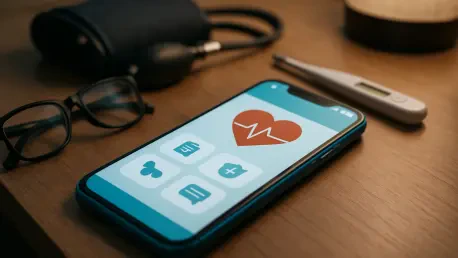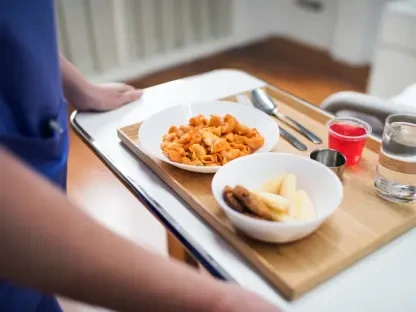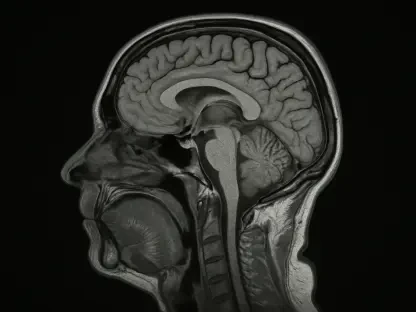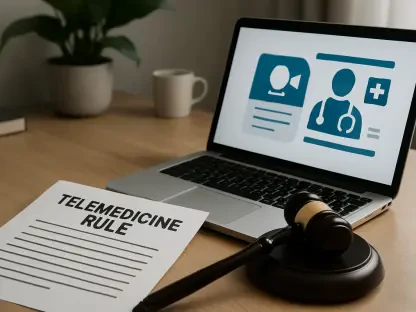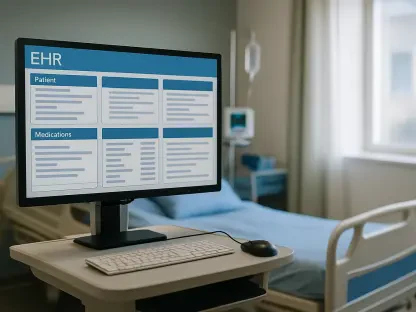Caregivers of older adults with cancer confront a moving target of medical tasks and emotional strains that rarely pause long enough for traditional support to keep pace, and the gap between what families must do and the help they receive has real consequences for patient stability and caregiver well-being. On any given week, responsibilities can range from tracking pain and fatigue to supervising medication schedules, arranging transportation, and responding to sudden symptom changes, all while maintaining family roles and employment. In this context, conventional home-based teaching—often a single, dense visit—can feel like a firehose. The content may be sound, yet the timing and volume clash with real-world bandwidth. A personalized, supportive mobile health approach aims to reframe this equation by meeting caregivers at the moment of need, surfacing tailored guidance in digestible steps, and sustaining contact as the care plan evolves.
Why Caregiver Support Must Change
Cancer care in the home demands a level of vigilance and coordination that rivals professional case management, but the cadence of support typically lags behind the demands of daily life. Home visits, when available, bring valuable rapport and context; however, they rely on synchronized schedules and often arrive as one-off sessions, forcing caregivers to absorb complex instructions in a compressed time frame. New questions arise after the educator leaves, when fatigue accumulates and symptoms shift. Delays in clarification spur uncertainty, and uncertainty drives stress, eroding confidence and amplifying the risk of avoidable errors. The mismatch between episodic teaching and continuous care is not a matter of effort—it is a matter of timing, accessibility, and reinforcement.
This is where personalized supportive mHealth changes the support curve by making education immediate, iterative, and portable. Instead of front-loading everything into a two-hour visit, smartphone tools deliver short, tailored modules aligned with the caregiver’s current tasks, plus reminders that cue action without adding pressure. Messaging channels shorten the distance between questions and answers, which is critical when instructions need adjustment or reassurance. Peer features add normalization and tips that professionals might not surface in formal visits. Together, these elements shift learning from event-based to continuous, threading guidance through the small windows of time that caregivers actually have—waiting at a clinic, sitting in a car, or winding down after a difficult day.
What’s Being Compared
The in-person, home-based model brings strengths that should not be dismissed: educators observe the environment, adapt demonstrations to actual kitchen tables and pillboxes, and pick up nonverbal cues that reveal confusion or distress. For sensitive topics—intimacy changes, end-of-life planning, or complex symptom troubleshooting—the human touch can open doors that a screen might not. Yet the model carries built-in friction. Travel and scheduling restrict frequency. Caregivers must rearrange work and family commitments to be available. The very intensity that makes a home visit comprehensive also risks overwhelming memory and confidence, particularly under stress. When conditions change—new medications, new side effects—gaps appear before the next appointment.
Personalized supportive mHealth, by contrast, tilts toward flexibility, repetition, and just-in-time adaptation. It combines self-paced microlearning with interactive checklists, scenario-based tips, and optional reminders tuned to the individual’s preferences. A caregiver preparing for a chemotherapy cycle can review nausea plans in brief bursts, then return to the same content after side effects emerge. Clinician messaging provides a safety valve for quick clarifications, and structured prompts encourage tracking of symptoms that matter for triage. Importantly, mHealth is not meant to replace human contact; instead, it sustains it in smaller, more frequent exchanges, allowing skills and confidence to build alongside shifting needs without forcing everything into a single encounter.
What the Study Found
Across knowledge and mastery, caregivers using mHealth reported a tangible edge: they felt better equipped to interpret medical terminology, noticed fewer mistakes in dosing or scheduling, and described smoother coordination with clinics and pharmacies. Being able to revisit tailored content—rather than relying on fuzzy recall from a past visit—strengthened mastery and reduced confusion at critical moments. The cumulative effect showed up in daily routines: checklists kept tasks visible without nagging, and scenario tips provided decision anchors when symptoms fluctuated. Over time, this reinforcement framed caregiving as a sequence of manageable steps instead of a barrage of crises, which is a core shift in perceived control.
The emotional impact was equally notable. mHealth participants reported lower perceived burden and fewer symptoms of stress, anxiety, and depression, attributing relief to two intertwined mechanisms: immediacy and reassurance. Faster clarification of instructions quieted second-guessing, and small wins—prompted by timely reminders or positive feedback—built momentum. Coping shifted from reactive to proactive as caregivers adopted stepwise problem-solving and prioritized actions based on urgency and impact. Peer spaces inside the platforms countered isolation by normalizing setbacks and sharing practical shortcuts. That social modeling mattered: seeing others navigate similar hurdles reframed challenges as solvable, improving confidence without minimizing the seriousness of the situation.
Why mHealth Works
Just-in-time education supports how memory and stress interact in the real world. Under pressure, long lectures fade; short, repeated nudges stick. When content appears at the moment it is needed—before a dressing change, at the onset of nausea, after a confusing lab call—retention improves and error rates fall. Iterative reinforcement sustains learning in small increments that respect attention limits, turning complex regimens into routines. Lower logistical friction is pivotal as well. Without the drag of travel or rigid scheduling, engagement can happen in spare minutes, which compounds over weeks into substantial gains in knowledge and confidence. In other words, the design aligns with daily life rather than forcing daily life to align with the design.
Community features layer on a psychological buffer that professional guidance alone cannot fully supply. Moderated peer forums gave caregivers a space to ask “Is this normal?” and to receive answers grounded in shared experience. The value here is not only practical tips—though those help—but also the feeling of belonging to a cohort that understands the stakes. That social proof promotes adaptive coping styles, encouraging caregivers to plan, delegate, and set realistic boundaries. Moreover, bidirectional communication with clinicians closes loops that often remain open after in-person teaching: feedback on whether a strategy worked, quick pivots when symptoms escalate, and encouragement when adherence improves. These feedback loops transform support from static advice to an evolving partnership.
Guardrails and Trade-offs
No digital tool can replace the nuance of a skilled educator reading a room or tending to sensitive issues that require trust built over time. Face-to-face sessions still matter for hands-on techniques, delicate conversations, and the initial scaffolding of rapport. The challenge is finding the right blend. Some caregivers prefer live interaction to feel heard and safe; others rely on it to tackle complex equipment or to navigate cultural or language contexts that technology may oversimplify. A hybrid model respects those preferences while recognizing that one-time teaching, however expert, cannot carry caregiving through weeks of uncertainty without supplemental, ongoing touchpoints.
Design pitfalls and equity concerns require deliberate attention. mHealth assumes access to a smartphone, connectivity, and basic digital literacy, which is not universal. Accessibility features—larger text, audio narration, multilingual content, screen-reader compatibility—are not optional; they are core to fair use. Alert fatigue can undercut good intentions when notifications pile up without prioritization. Content must be evidence-based, aligned with the care team, and concise enough to be usable under stress. Privacy and consent guardrails need to be clear and robust, especially around sensitive data and peer spaces. These trade-offs do not negate the benefits; rather, they define the conditions under which mHealth helps instead of overwhelms.
How to Put This Into Practice
Implementation works best as a sequence, not an event. Begin with a brief in-person or video orientation that establishes rapport, assesses digital comfort, and maps key concerns to specific app features. From there, tailor the mHealth plan to clinical milestones—chemotherapy cycles, symptom peaks, care transitions—and set a cadence for short check-ins via messaging or telehealth. Train nurses and oncology social workers to prescribe vetted tools, interpret basic usage signals, and adjust content based on emerging needs. Build moderated peer communities within the platform to foster safe exchange while curbing misinformation. Track burden, mood, and task confidence over time with validated measures, and feed that data back into care plans in plain language that supports action.
Scaling this model across service lines called for pragmatic steps that balanced reach with rigor. Health systems aligned app libraries with formulary-like governance, mandated accessibility standards, and established pathways for device or connectivity support when needed. Condition-specific modules extended the framework beyond oncology to diabetes, heart failure, COPD, and dementia without reinventing core components such as just-in-time education, clinician messaging, and peer support. Teams prioritized outcomes that matter to families—burden, mood, coping—alongside hard metrics like readmissions. In doing so, digital support was positioned as an enduring layer of care rather than a novelty. By closing timing gaps, elevating personalization, and preserving human touch where it counts most, the blended approach offered concrete next steps that had already improved caregiver stability and patient continuity.
